August 16, 2015
Martha O'Kennon
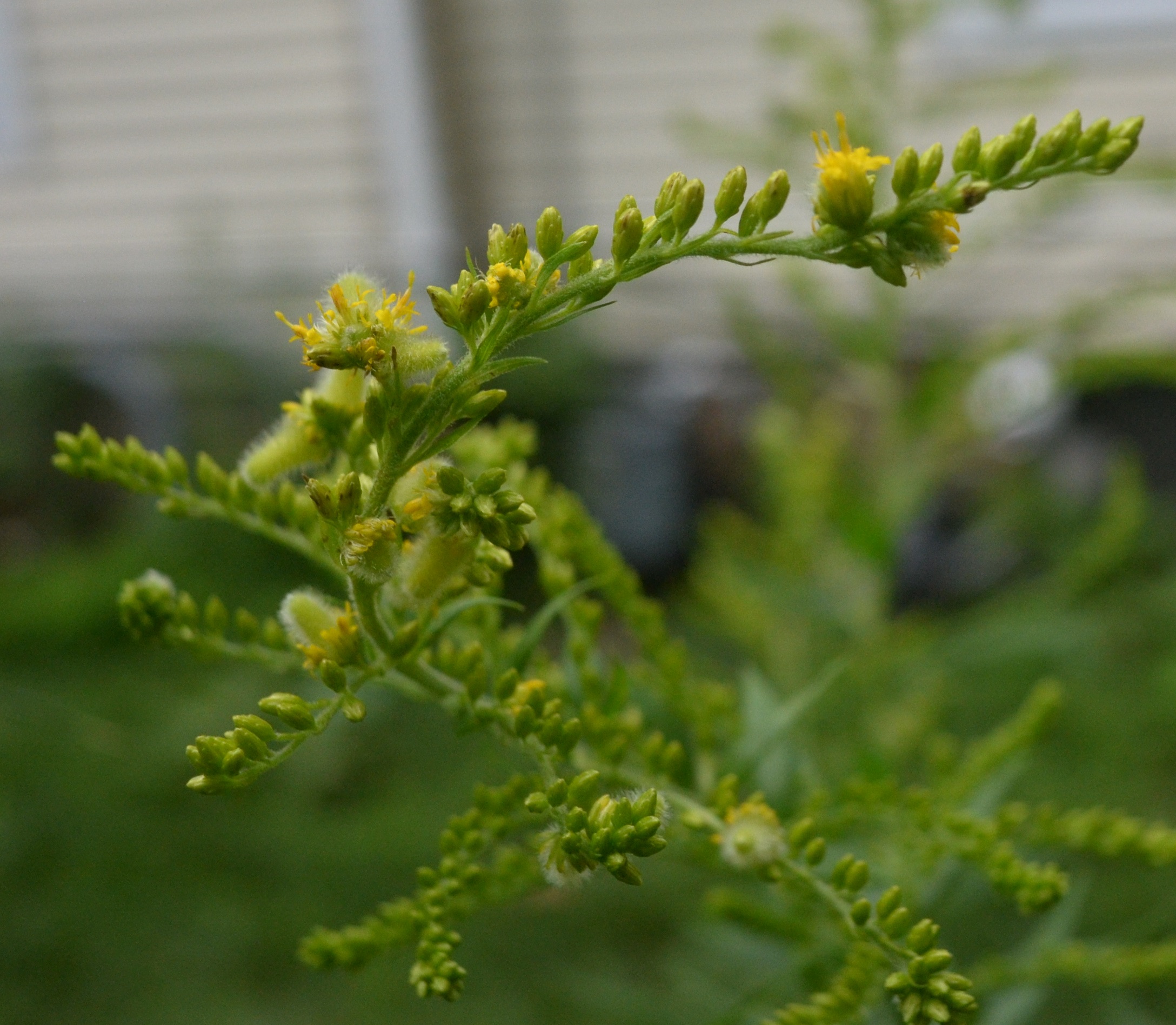
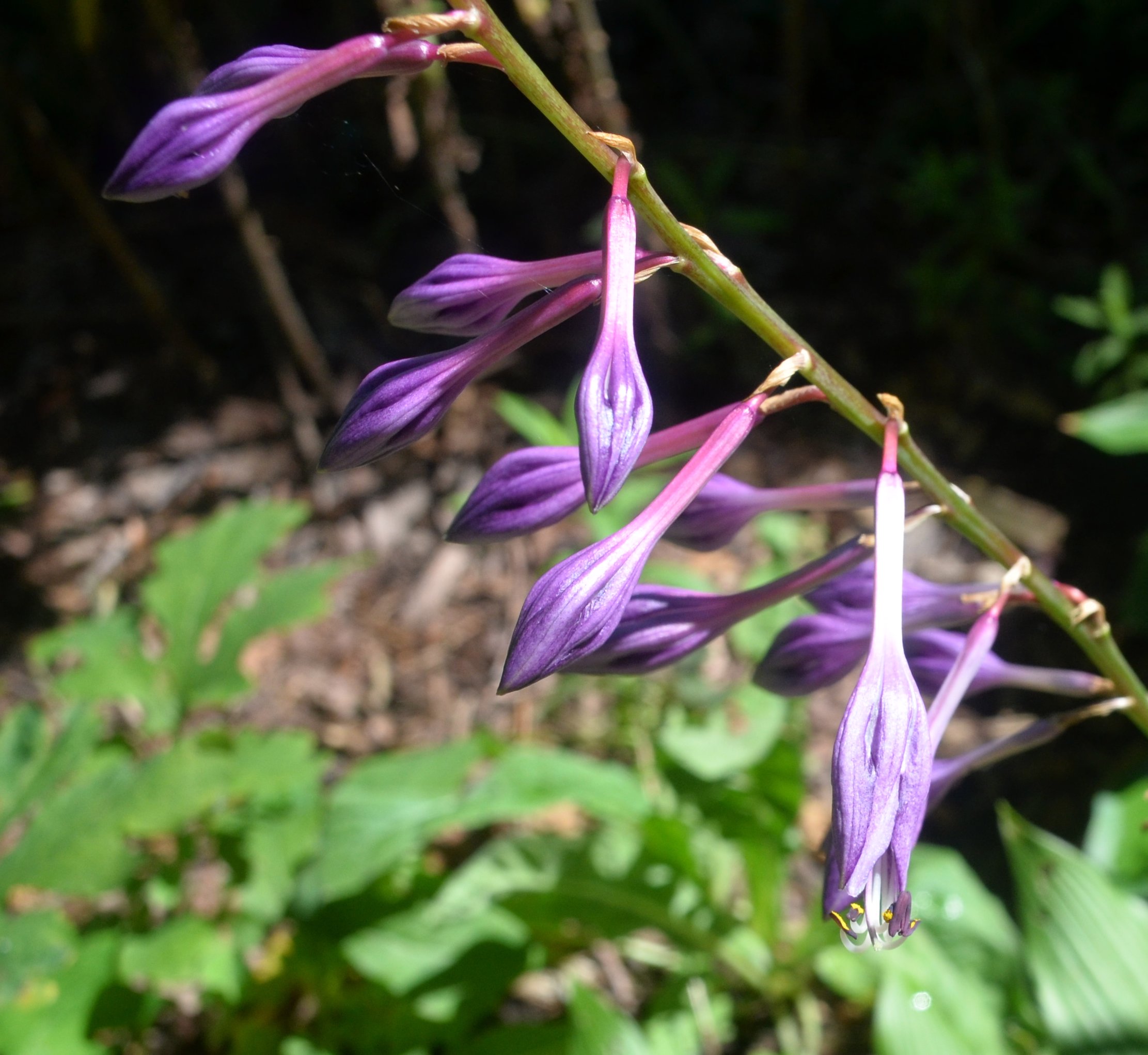
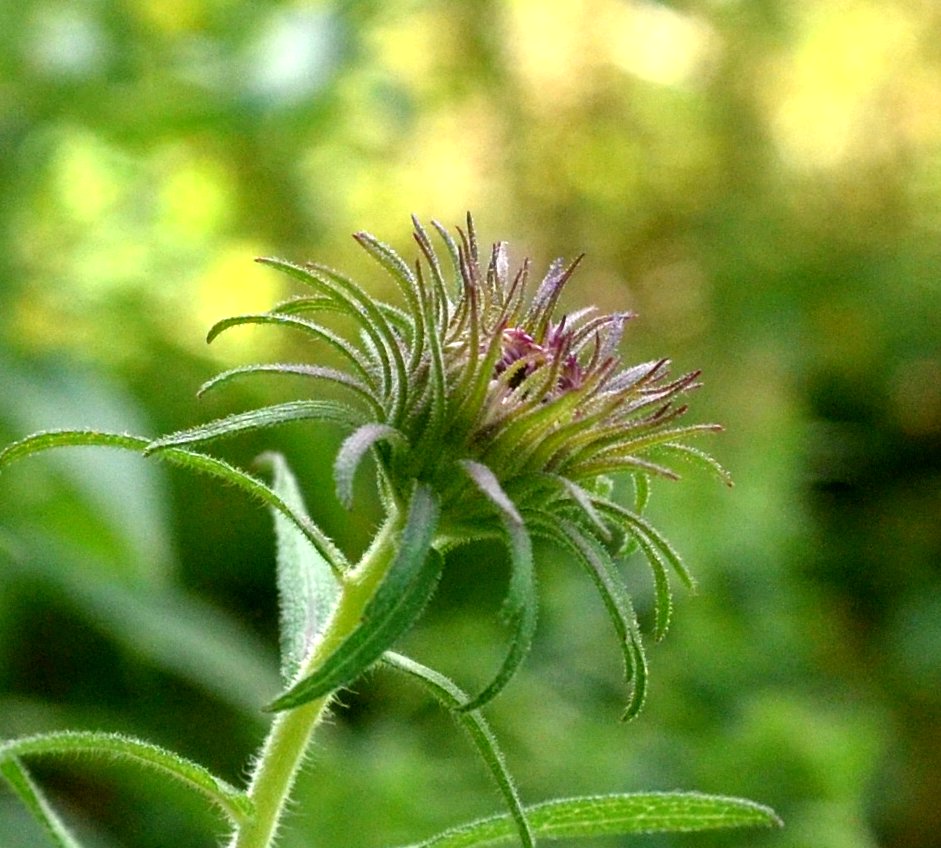
They say summer is half over but I don't believe it. Some of the days are now so hot and humid that I can only stand to be outside for a maximum of half an hour. The evening air is cooler but of course there is less visible going on out there. At about noon, small flying creatures, bees and flies and an occasional wasp, especially the paper waspies, come to the potted flowers on the deck railing. The trumpets are wilting on the vine, but there are still some hostas blooming, a few late daylilies, and the pretty hot pink phlox I started off with last week. BUT the asters are just about to start - a couple flowers near blooming, and the goldenrod showed some yellow yesterday. Yay.
Remember that there is information in the name of the file for each image. You can see itoby mousing over the image - look at the lower left of the screen.
Or you can click on the image to get to the (usually) larger image. Then the info is displayed in the address line above. If the image has been cropped
so that clicking on it doesn't result in a larger picture, you can always hit control plus at the same time to increase the size.
Baby watch. This week I rearranged them from 5 in a box to 2 in a box. And instead of a dime, I can compare them to a quarter or a 2 rand coin. Are these still in circulation? The one that I thought was really green turns out to be REALLY green. To prove that it was not just a recently shed instar, I looked through the old skins (they don't eat theirs, like more fastidious great moths) and yesterday found a green skin. I just wrote to bugguide to see how much of a fluke that is. I may get a message by the time I finish composing this episode. But isn't it a STRIKING little thing? Note the titles of the pictures. They were in the 3rd instar last week but by now most are in the 4th, except for one runt, who has hardly grown at all? It still has a good enough appetite for such a little one so I'm not putting it into a sick box yet, even though one of its box-mates, the other surviving runt did die this week. The last picture is of a caterpillar and its old skin.
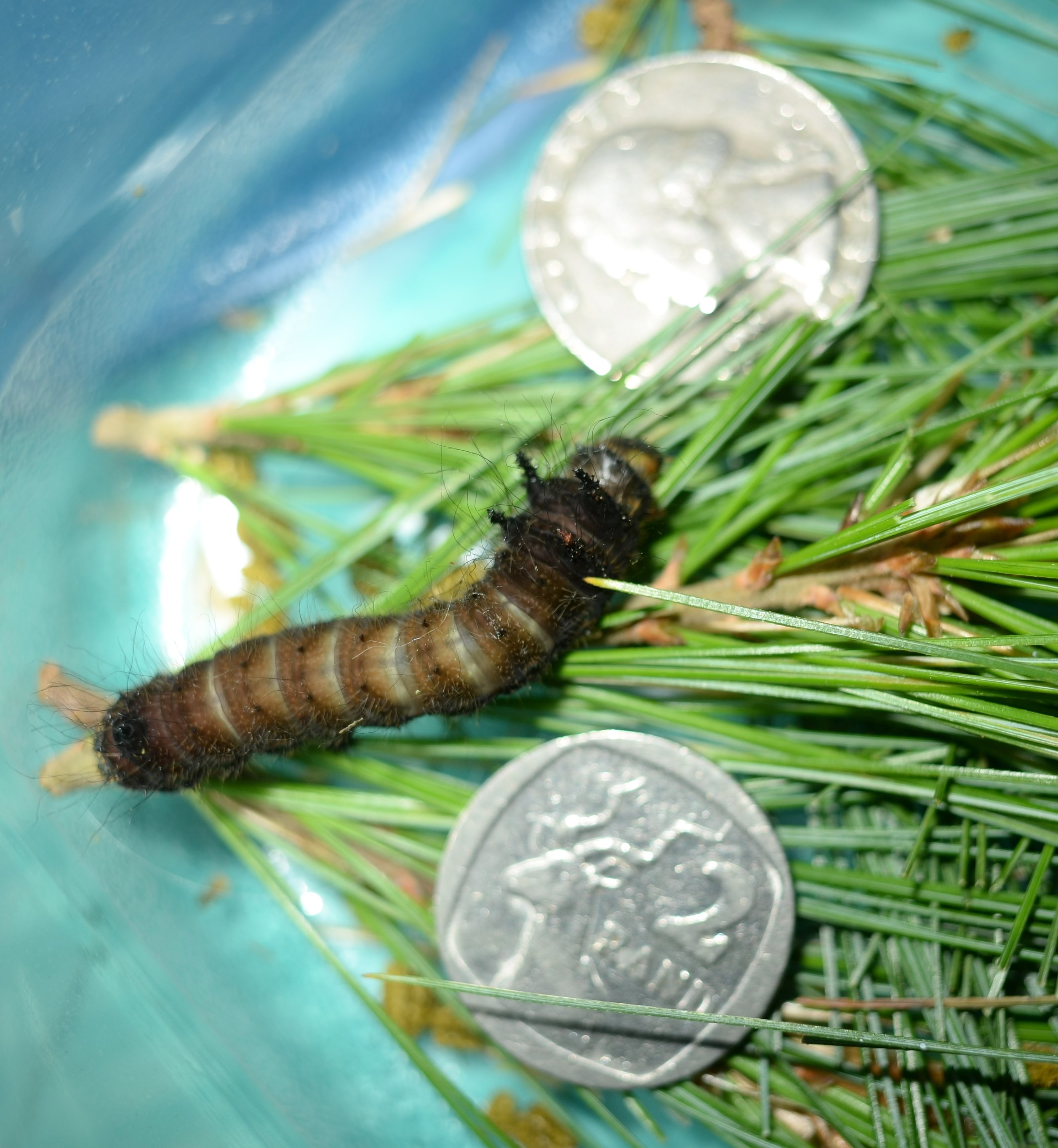

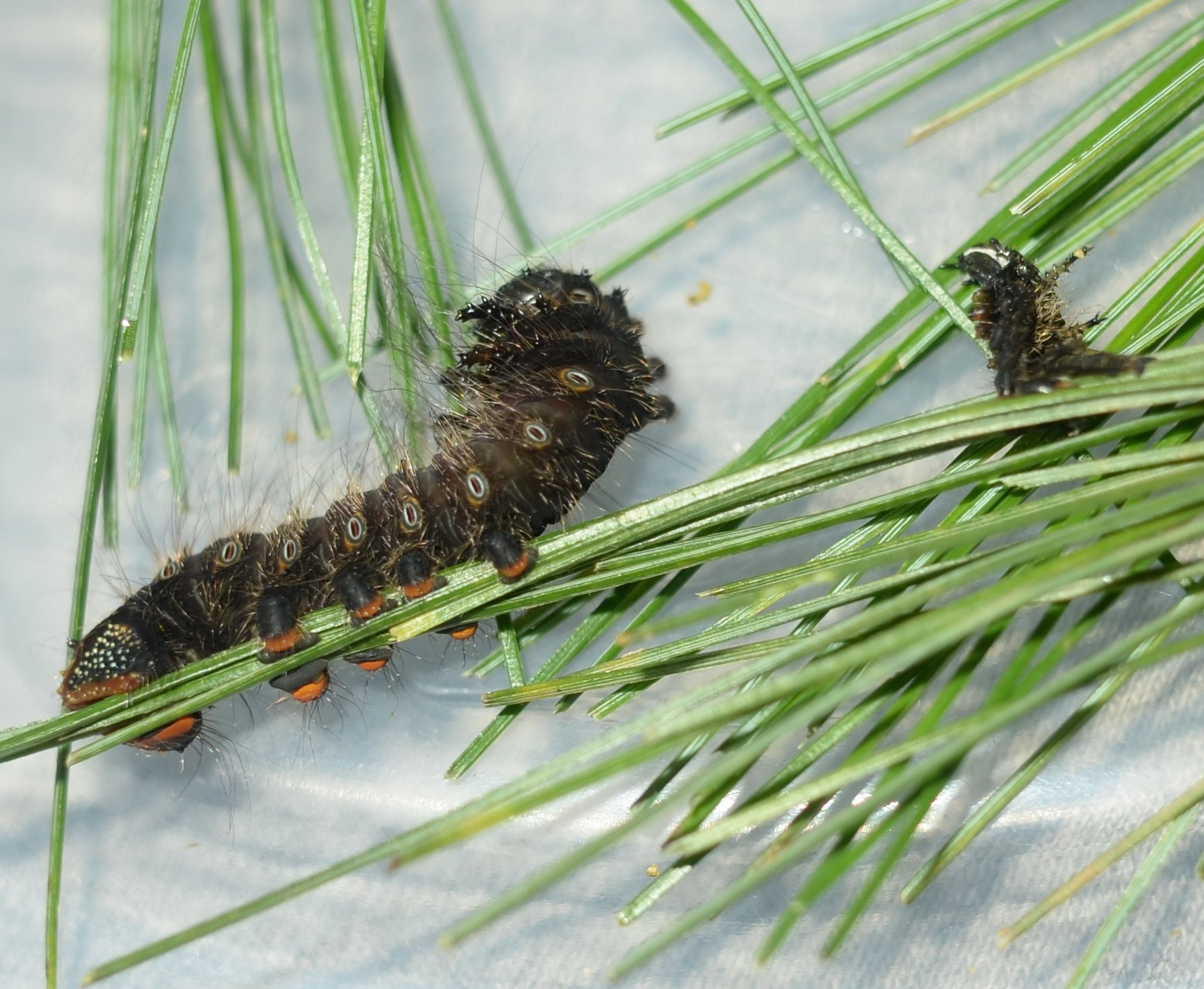
Now most of the tadpoles of the second litter have crept out of the pond and are likely to be underfoot. This morning one gave itself away by hopping out of my way. But the little tree frogs are growing a tiny bit and can still be found every once in a while up in a raspberry plant or on a vine climbing up such a plant. They are so well color-coordinated with the vegetation that it is hard to explain how they register in one's consciousness. Somehow they call to me from obliquely, and first register as "that leaf is strangely folded" or some such thing. Later you will see the katydid that appeared like that, from off to the side. Anyway, this one has a bit of a Garfield sneer on its face, as if to see, get lost!
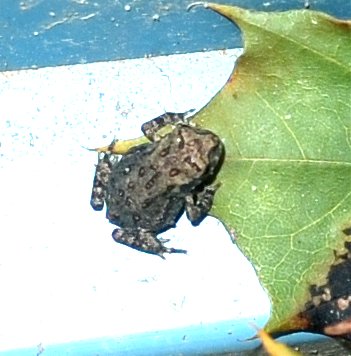

Beetles show up in the strangest places. This first one appeared on the bathroom floor, and was wondering "How the hell did I get in here?" while I was wondering, "Where did that spider come from?" So I opened the window (after first catching it in a glass and taking a few pictures) and let it out. Zoomed in onto, it seems to have a nice pair of pincers which I couldn't see at first, a black pair of hard wings, and a deep orange-red thorax and head. There seem to be a lot of small insects that match that color description, so I haven't nailed its ID yet. The last one is a Locust Leaf Miner, which isn't too surprising since we have locust trees across the street. I will wait till it's cooler and go over and inspect the leaves. None of these beetles is more than a centimeter long.
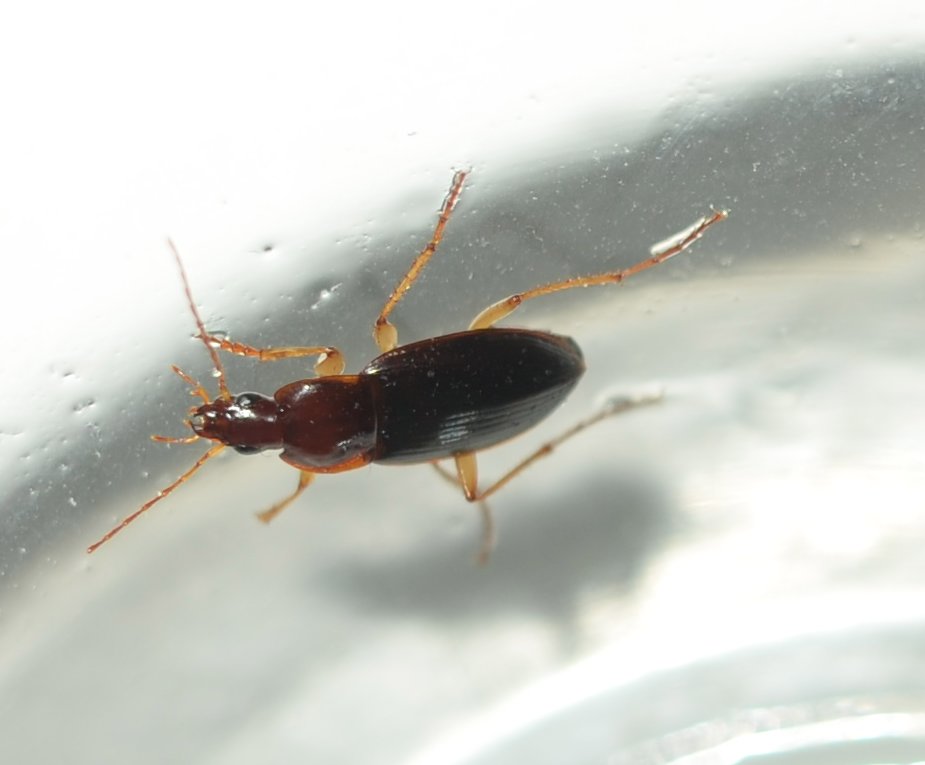
 8 13 15 3.jpg)
This tiny beetle looks wistfully off into the distance. The thing that looks the most like it in the
Bugguide database is the "Western Grape Rootworm", which must refer to its larva, or grub. Don't try taking this to the bank yet. Then the ladybird beetle.
They seem thick as thieves this year. I've never seen so many, which must mean there are a lot of bugs out there that need culling. And finally a lovely little three-lined potato beetle, floating in air (in a spider's web) over its temporary favorite, a purple nightshade leaf.
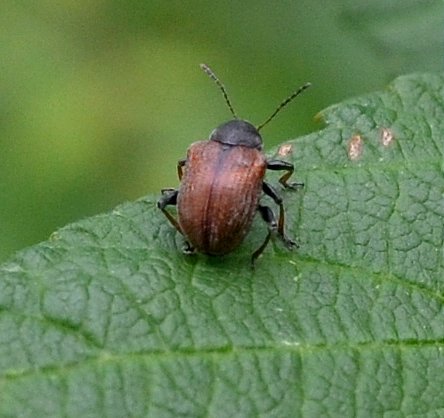
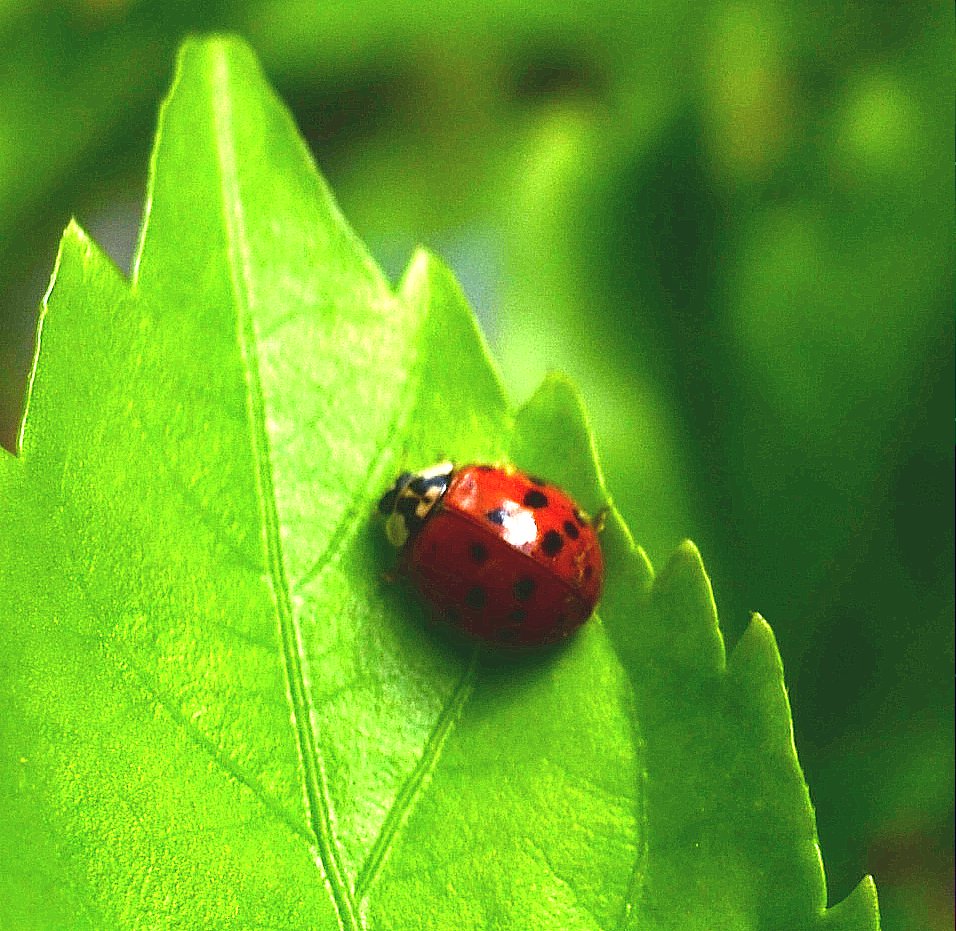
 8 14 15.jpg)
We also had our share of bugs. Most of them were leafhoppers, starting with two different brownish ones(the first on aster) and followed by that pretty little candy striper (on an oak leaf) and one of those whitish ones that love the asters.
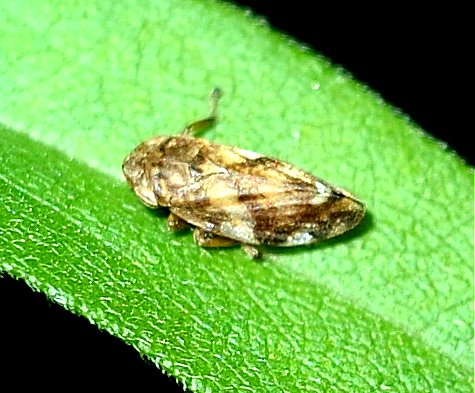
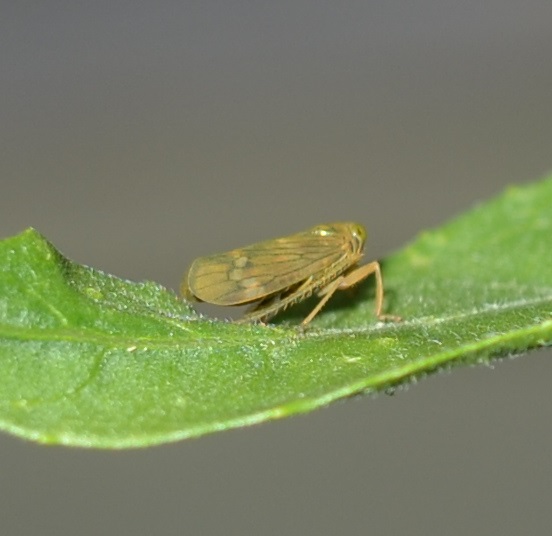
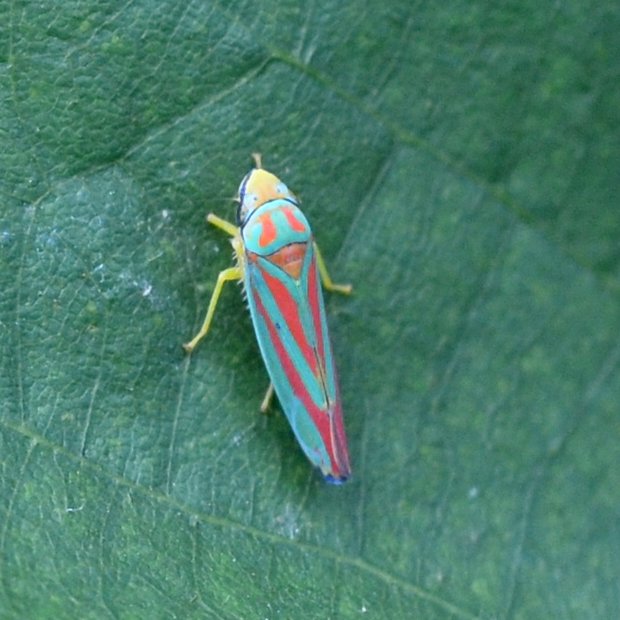
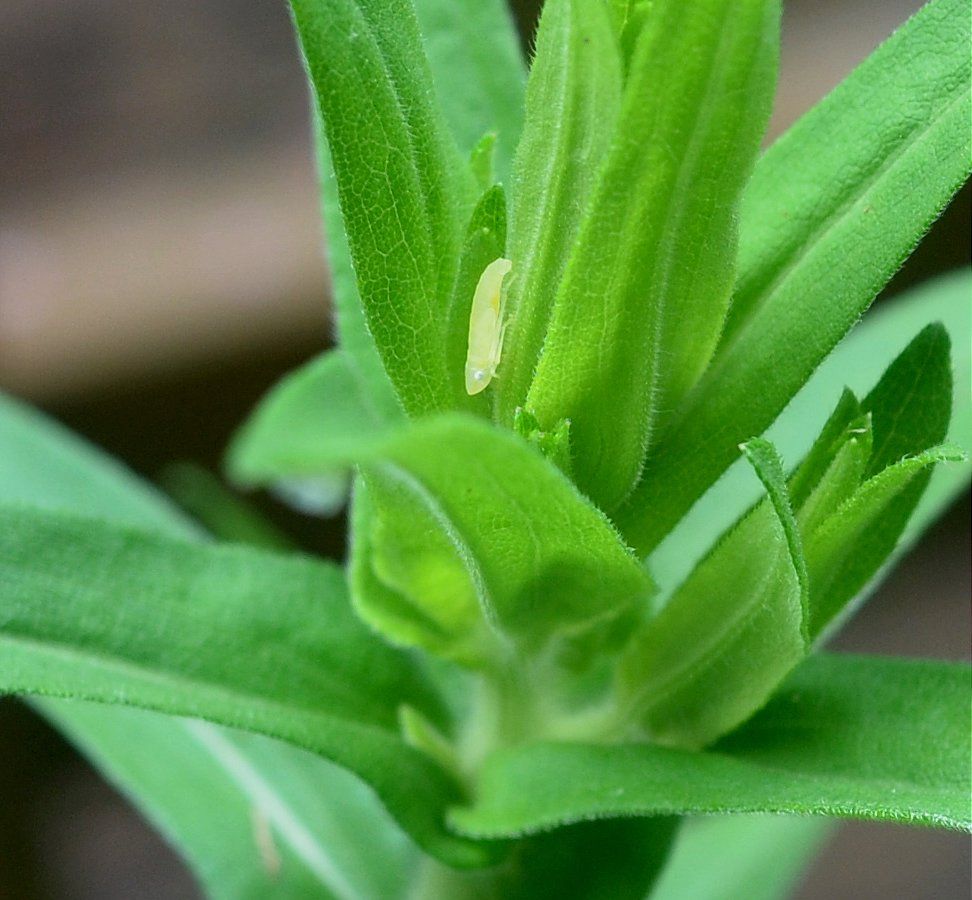
Though not a leafhopper, the spittlebug that we saw before and thought might be an alder spittlebug, appeared again on the redbud limb where the two-mark treehoppers pretend to be thorns. I'm still trying to verify or debunk its title. One of the food groups for the alder spittlebug is walnut, and I always have a few walnut saplings in case some luna moth caterpillars need rearing. But there is still something in its coloration that's not quite right. The two-marks are traveling farther from home (redbuds) now. This one found itself on an oak leaf. Still the strange two-humped treehoppers are faithful to their thistle. In fact, they are about to love it to death. This colony is much like the one to be found under almost every large thistle leaf.
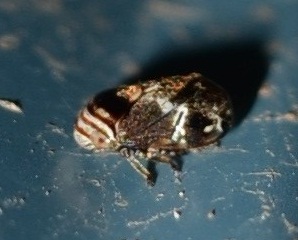
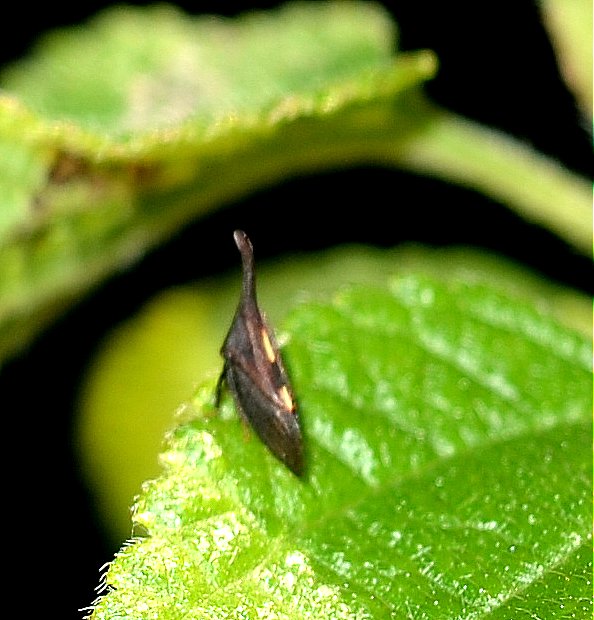
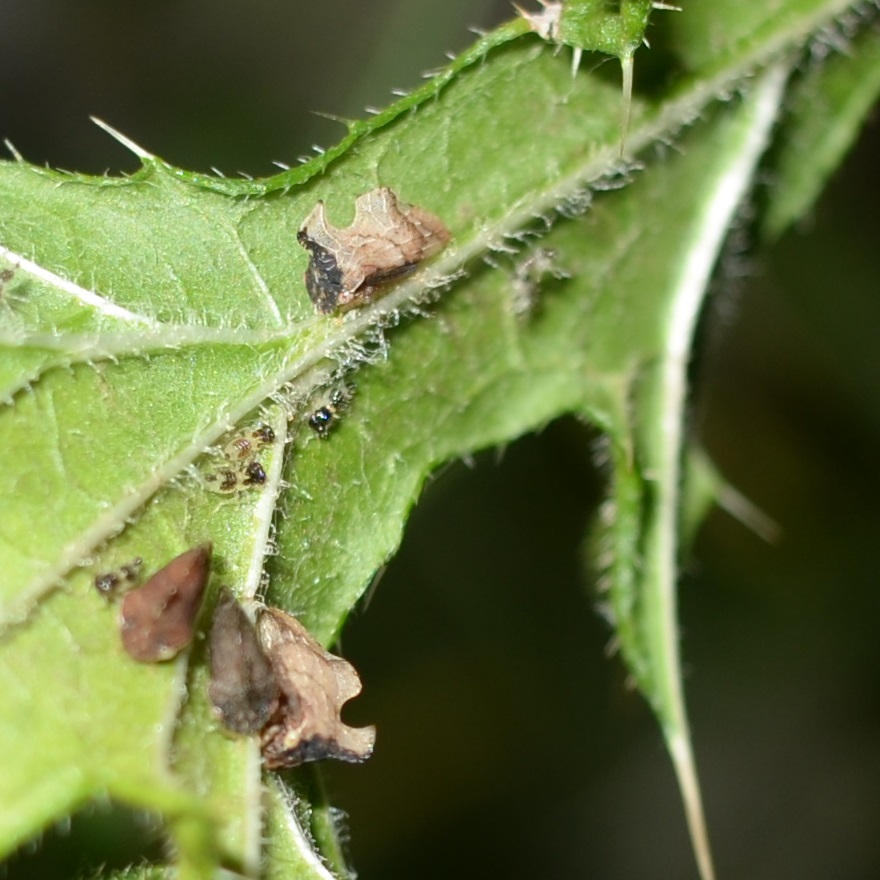
There are more and more tiny baby assassin bug nymphs, mostly only a quarter-inch (6 mm) long, this one included. They are about the tiniest things with 6 legs that you can plainly make out to be an insect, especially if they sit still and act like a dust bunny. But remember, at the same time (like last week) we were seeing adult ones. Hint: next week you will see the tiny green one with red eyes that appeared today, but I had already sent my picture file over. So I figure the appearance of adults isn't too surprising - somebody had to make the new babies. We also saw a few different stink bugs. Remember the green, black and white stink bug from a couple of weeks back? Well, another showed up a few days ago, standing its ground in front of a rather surprised daddy-long legs. Last week I found this bug on the shop wall. It was darkish so I didn't get a real true picture. But if you zoom in a familiar pattern emerges - it resembles the abdomen of the green stink bug. And sure enough, it is a nymph of the green bug. This last one was a real puzzle. The face is triangular like a praying mantis's. The biceps are huge and prickly - don't get caught by it. I had originally thought it was a beetle but after a LOT of searching up and down the bug family tree I found something that resembled this one. It is off in the Pentatomomorpha family. I'm guessing that Phlegyas abbreviatus is really close.
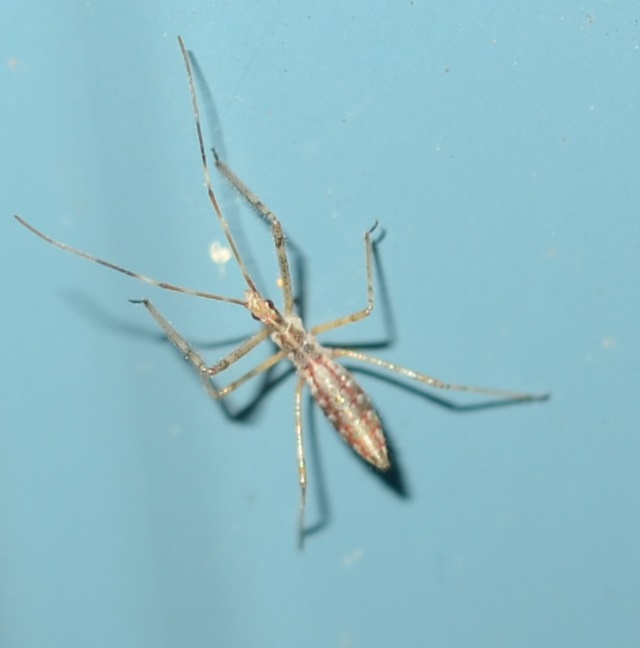
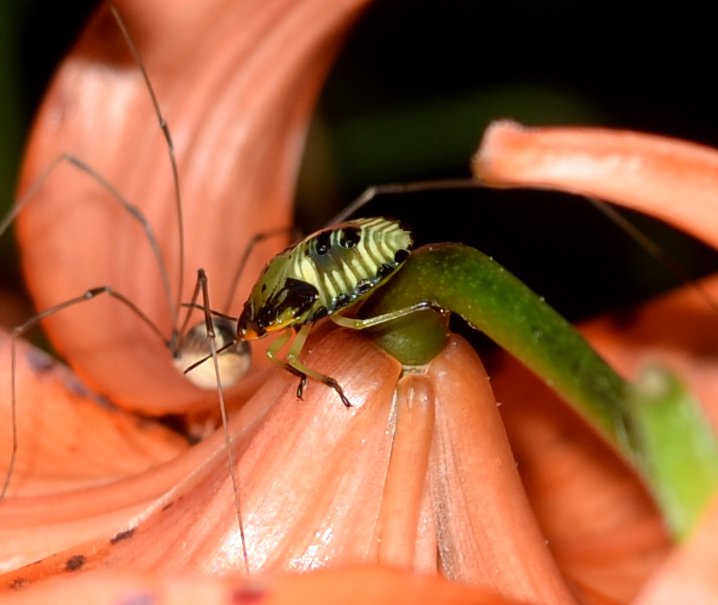


Yesterday I saw two odd stinkbugs (I think). The one that is problematic is this one with a flowery pattern on its back. Since it flew off before I could get even one picture of its back, we will have to wonder if it really is a stinkbug. Then I found a rusty brown stinkbug, and thought, What a nice color it is. Only while writing this section up, I realized that the "flowery" one and the rusty one were one and the same. In the rusty one's wings one can see a ghost of the "flowers".

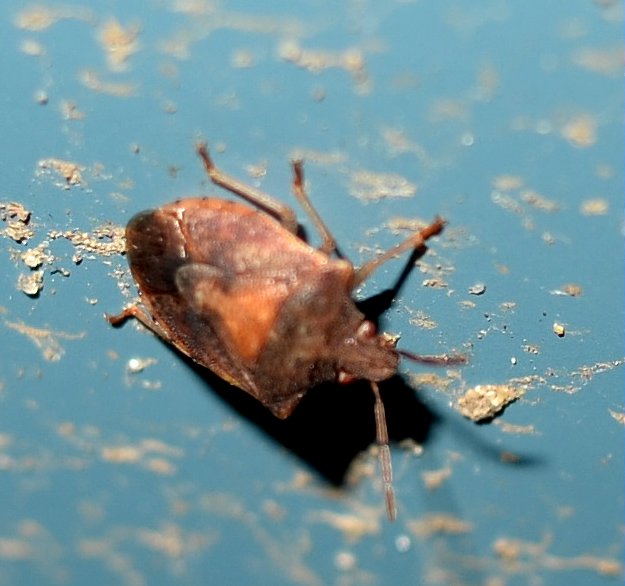
There were a few bees - mostly the same ones that have been showing up all along. This golden one might in fact be the green metallic bee, but some of them have a golden phase. So the picture I showed last week may well have been "green" but looked gold. The green metallics are fond of thistle, but that thistle plant bloomed so high it was hard to reach any flower with the metallic/sweat bees. I did manage to lean on the generator so didn't fall down a slope while photographing this mason bee in the highest thistle. This last small bee seems to visit all the flowers. It might be a Small Carpenter Bees (Ceratina subgenus Zadontomerus). Supposedly there is a yellow marking on the face and i have some pictures of this bee with the yellow patch. The only wasp that settled down long enough for me to snap it was the european paper wasp. They are so thick and spend so much time down near the ground that at first I thought they might be the stinging yellowjackets, but no, they are the paper wasps. They spend a lot of time in the pond gathering water, and what they must be doing down in the vegetation is collecting pulp to mix with the water to add to their paper nests.

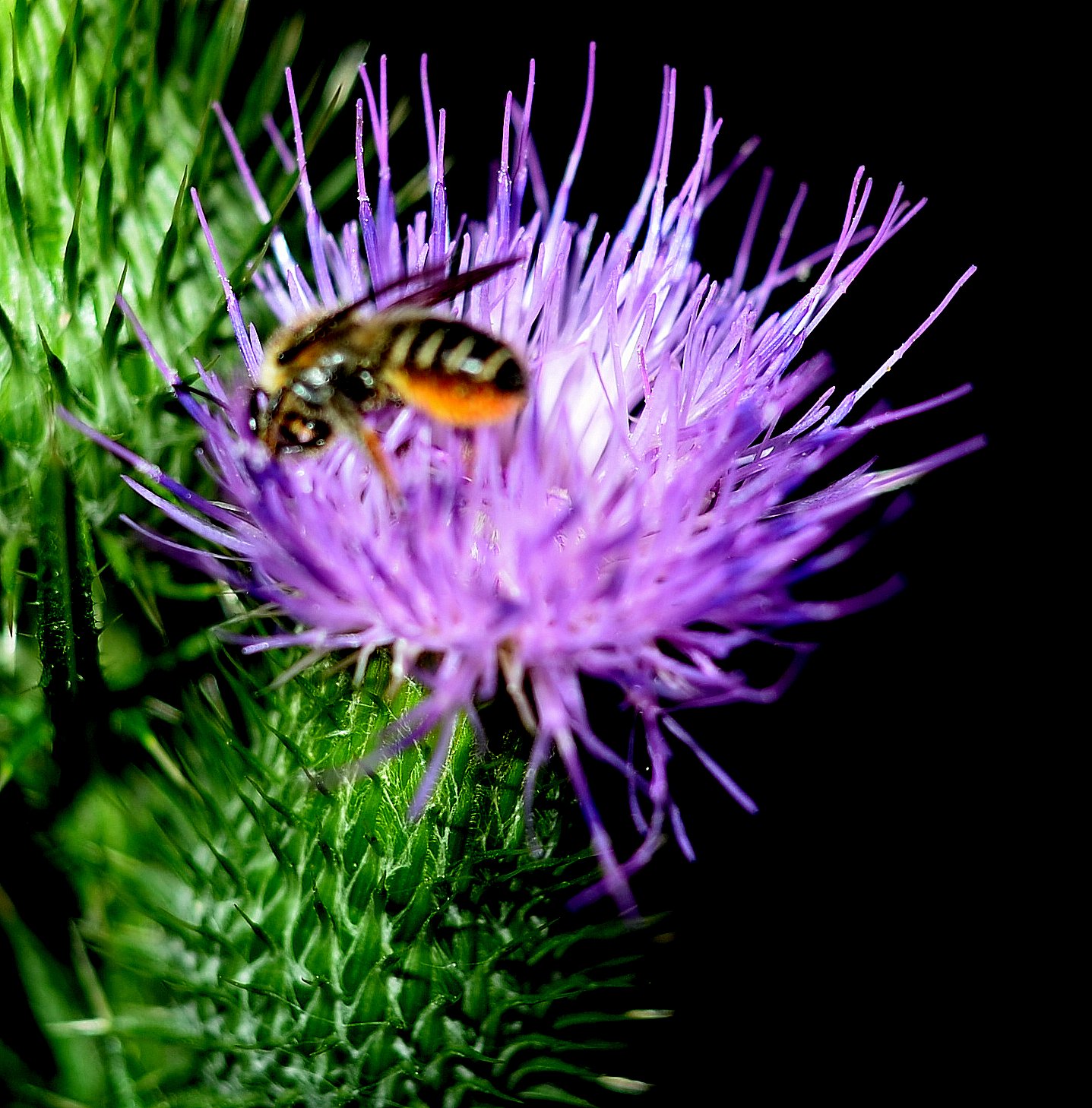
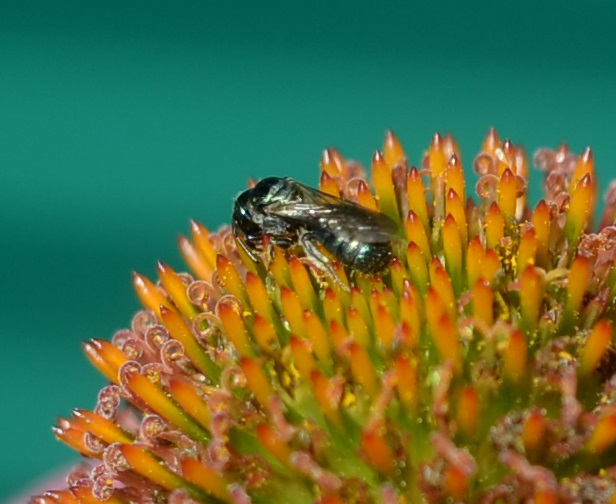
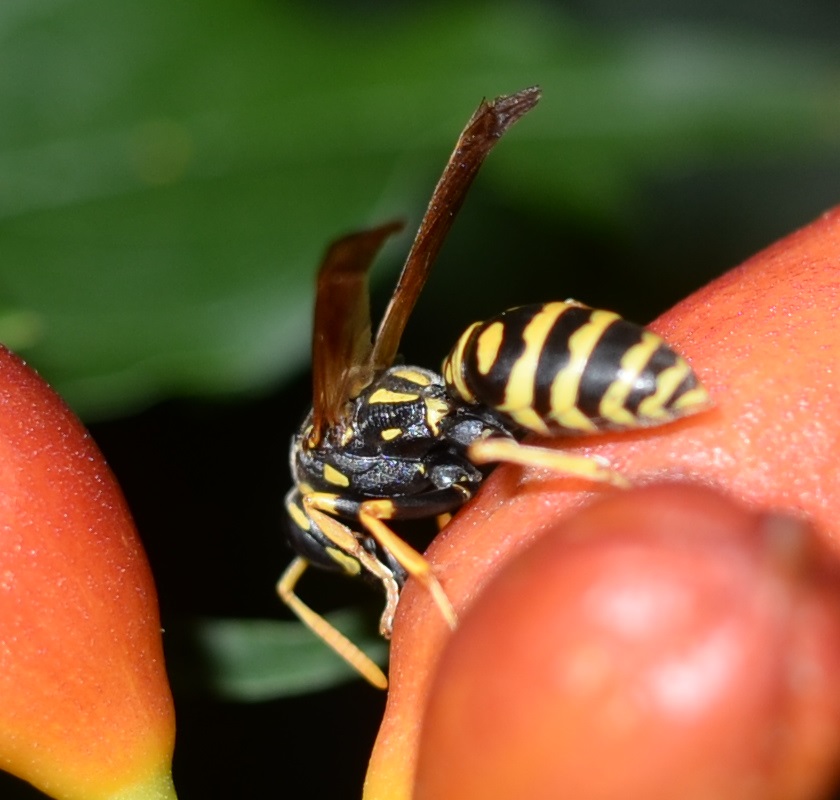
Only one kind of dragon/damselfly. The lovely orange ones are almost friendly. They will light on a stalk a foot away from your face. Bugguide says that Autumn Meadowhawk is the most docile kind so I'm caving towards that (Sympetrum vicinum). There was also only one kind of Orthopteran. Do you remember that katydid nymph that had been appearing in various places: a zinnia, a tiger lily plant, the thistle? Well, yesterday I bagged a great female, seems too short a time after spotting a fairly small nymph, so maybe there are still more than one of this kind. She is called (remember how to tell it's a she?) a Fork-tailed bush katydid, and is a very versatile green. Another singleton: this mayfly. I was told that it is not an adult, but a subimago, a nymphal form that can fly even it isn't perfectly finished shedding its skins. A certain Mexican salamander can stay as a subimago until climate conditions are such that it can assume its adult form. That reminds me of the oxylotl poem Mad Magazine printed back in the '50s.
First here is a serious article on the axolotl
and here is an article containing some crazy poems from Mad Magazine. The third one is the Axolotl poem.

 adult female 8 14 15 3.jpg)
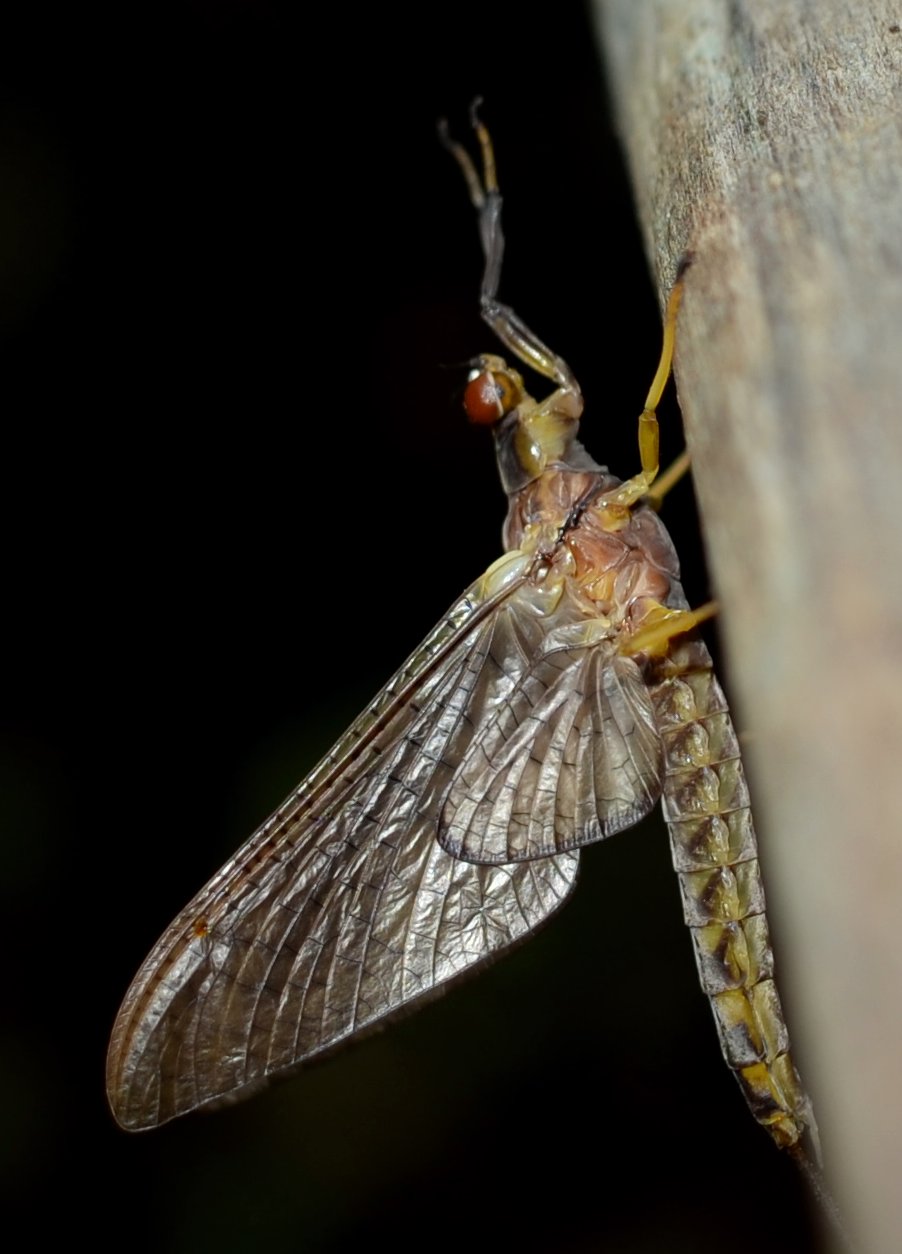
There were flies, but I didn't catch many. For a while the mosquitos seemed to have died out a bit, but then we got rain and the new hatchees are so hungry you need two more hands just to slap them so they don't bite you. One of these big black horse flies was on my car door but I didn't have my camera. Fortunately while walking at the gym I found one on the floor. They spray a lot of pesticides inside, I think. Anyway, nobody else wanted it so I brought it home. The gold fly with spotted wings was on the deck hibiscus. Then comes a long-legged fly, not a fancy iridescent one but a gold-topped powder blue one, probably of the Dolichopus gender. I'm still waiting for an ID for the tiny slim fly or beetle or what in the last picture. Oh no, I'm not. The ID came back very fast. It's
one of the checkered beetles, a Clerid named Phyllobaenus pallipennis. One of the bugguide people, Metrioptera, got it immediately. Oh! how could I leave out this love scene between consenting flies? Something looks strange here. It seems that the fly with the big space between its eyes is on top. What's different about that?
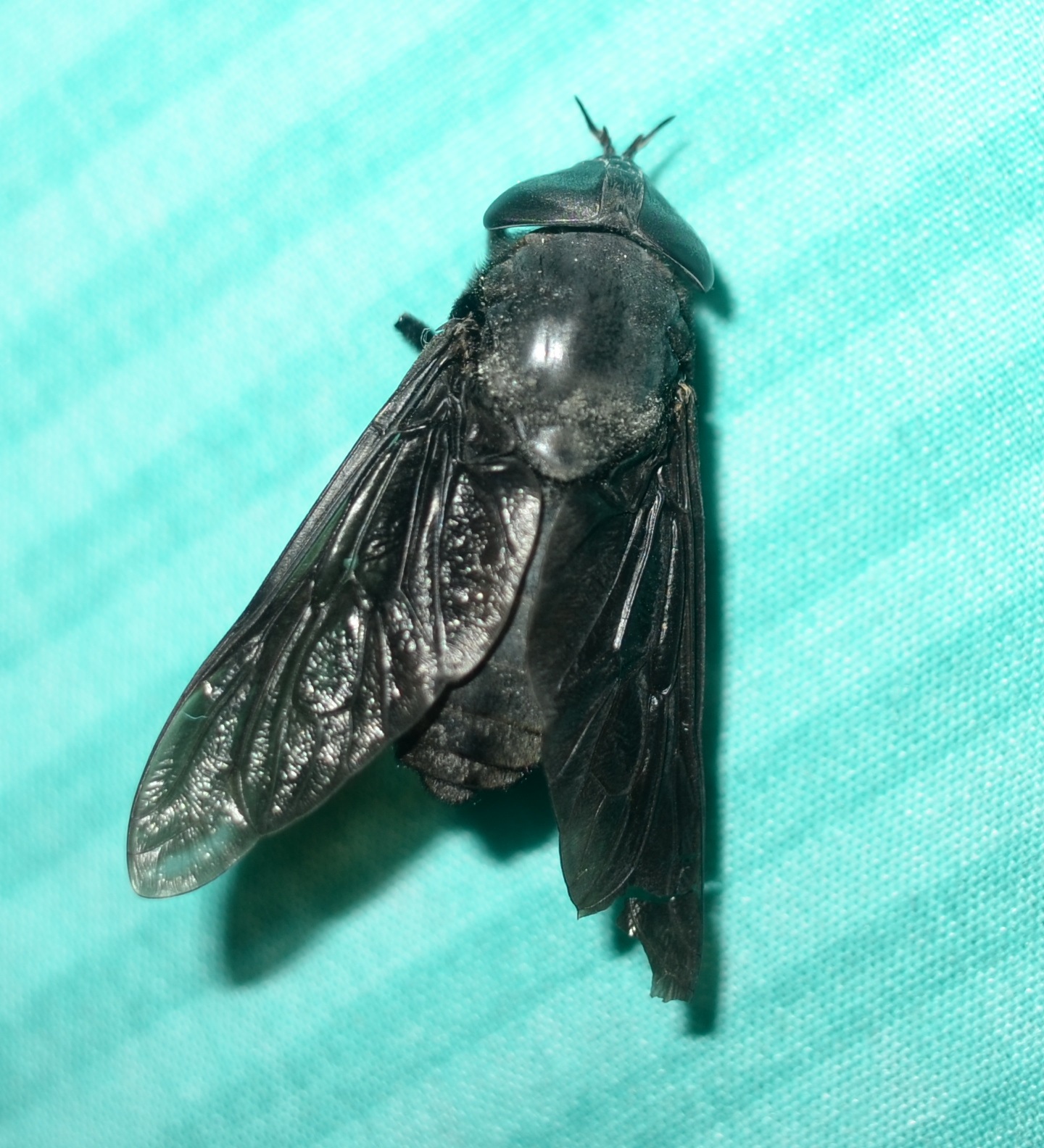

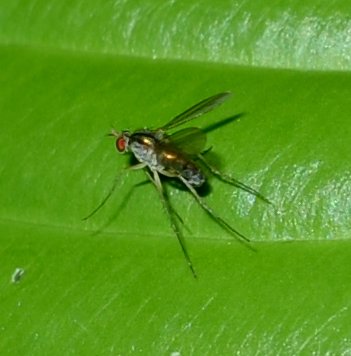
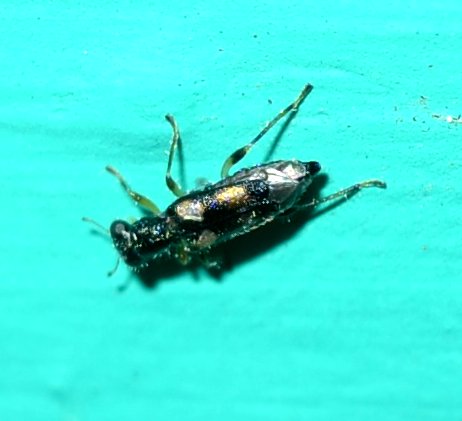

Among spiders this week, the preponderance were of baby crab spiders, especially baby flower crab spiders, like this goldenrod crab baby in the purple coneflower. In another coneflower head was a similar baby crab, but white! What is up with that? Well, these little crab spiders can change colors to match their surroundings better. Later when the goldenrod is full of them, they will be mostly bright yellow, but some others on other host plants will be white.


Do you remember back in June when these tiny spider eggs were just hatching? We have followed them as they developed. They very quickly showed that they knew how to make an orb web. I confess that several of the early stages could be seen simultaneously, as the broods seemed to have hatched at different times. But this week we got to see the full adult (and this one is a male, how can I tell?) in all its majesty as it rides its wind-blown web. This one was taken in the weed patch next to the house. I don't have a dorsal view because he is so close to said house. Meanwhile you can be sure there are others tucked away mostly out of clear sight, weaving and entertaining delicious guests.
 6 10 15.jpg)
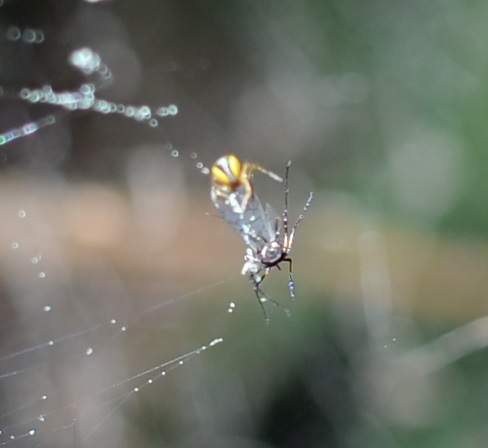

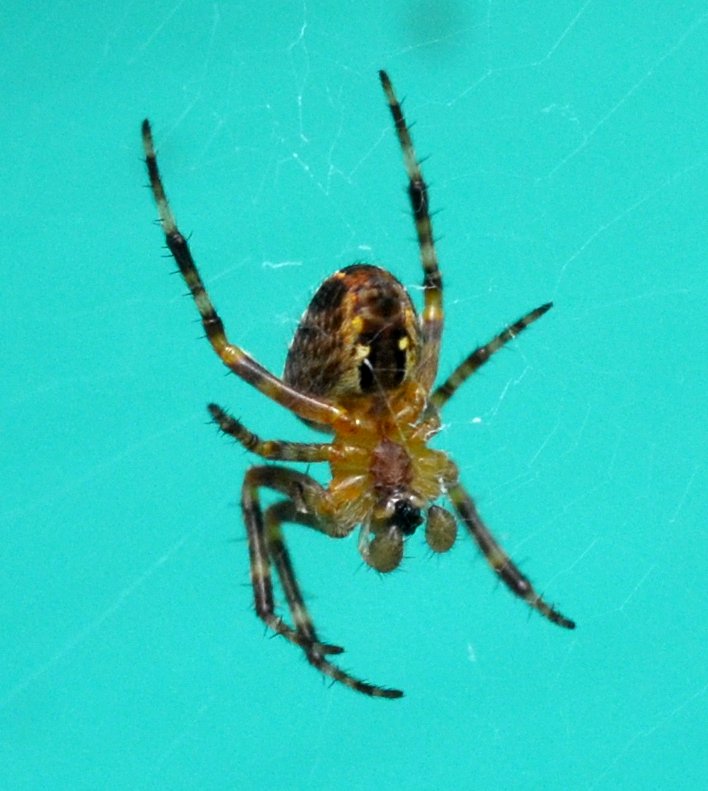
So another week has come and gone. The photos are fairly few, mostly because of the humidity and heat. Mosquitoes I can spray for, but if anyone here knows if a spray for humidity has been invented, please let me know. But don't worry, I will be out there for short times as the summer really slides into defeat. The goldenrod and asters will entertain us for the latest summer and fall. Here the students are already back and the flashing yellow light has now been set to change from red to green as they toddle across the street, heavy backpacks and new clothes and all.
I know some of you are students, but many of us are already retired from one thing or another. Albion has a wonderful institution called Albion Area Lifelong Learners, in which seniors (over 55) can for a nominal fee take fascinating classes from old faculty, young faculty, townspeople of all kinds. And they can also teach classes on things they have learned. These classes punctuate the year: October, February, and May. But in between we are reading, traveling, and definitely learning! So while I feel a little bit of envy for the students learning, say, the Fundamental Theorem of Calculus, for the first time, I also feel very lucky to be in an environment where each of us can learn something absolutely amazing every day. Get out there!
Back to August 9
On to August 23
Back to 2015 menu
Back to main menu
copyright Martha O'Kennon 2015












 8 13 15 3.jpg)


 8 14 15.jpg)


















 adult female 8 14 15 3.jpg)








 6 10 15.jpg)


